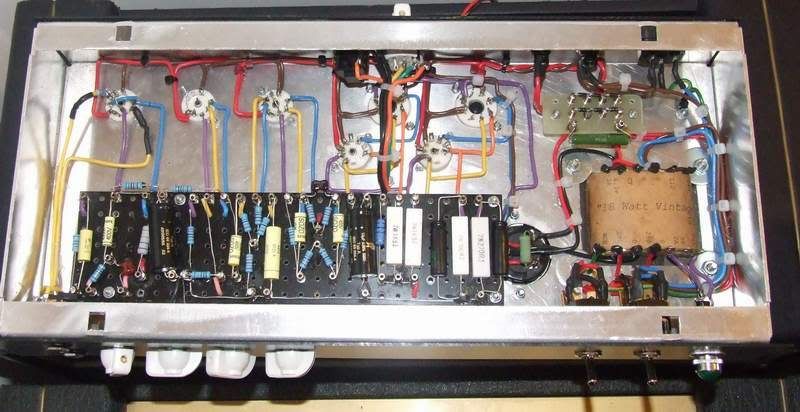Thanks for the book download that a good one.
I managed to get the hiss reduced, I did two things, one was increase the plate resistor on the input parallel triodes from 68k to 100k for a little more drive. this would not have effected anything hiss wise that I was having problems with.
The other thing I did was tie the three pins of the un-used triode together and connected those to the chassis. the hiss is now acceptable .. or what I would expect.
I do now have a very very faint tick sound. probably related to my linking the three pins together.. think I am going to get my scope out.
EDIT: found ticking to be from power amp/powersupply.. here we go
Picture of the amp in progress below

I managed to get the hiss reduced, I did two things, one was increase the plate resistor on the input parallel triodes from 68k to 100k for a little more drive. this would not have effected anything hiss wise that I was having problems with.
The other thing I did was tie the three pins of the un-used triode together and connected those to the chassis. the hiss is now acceptable .. or what I would expect.
I do now have a very very faint tick sound. probably related to my linking the three pins together.. think I am going to get my scope out.
EDIT: found ticking to be from power amp/powersupply.. here we go
Picture of the amp in progress below

Comment